The challenge now will be to preserve the experimental, radical, independent spirit in terms of the choices we make and yet work as an institution.
Daria Khan is the curator and founder of a one-of-a-kind art gallery based in London, UK. Mimosa House is an independent, non-profit art institution located in Theobalds Road, Holborn. The gallery is focused on showcasing works by and creating a dialogue between intergenerational women and queer artists.
Before founding Mimosa House, Daria studied Art History in Moscow, Russia. She then did her Masters in Curating Contemporary Art from the Royal College of Art. She has had her projects exhibited at the Austrian Cultural Forum, London, Photographers Gallery, London, Freiraum 21 International, Vienna, and the 5th Moscow Biennial, along with curatorial residencies at Palais de Tokyo, Paris and Museums Quarter, Vienna. She is currently undertaking the MPhil/PhD Art Programme at Goldsmiths University, London.
We had a long conversation with Daria through a video call in July 2021, when London had just begun opening up after one of its many lockdowns. Daria, at the time, was in the midst of curating the currently ongoing exhibition ‘Cosmic Mothers’ at Mimosa House. We spoke about her life and work in the context of the art world. Read more:
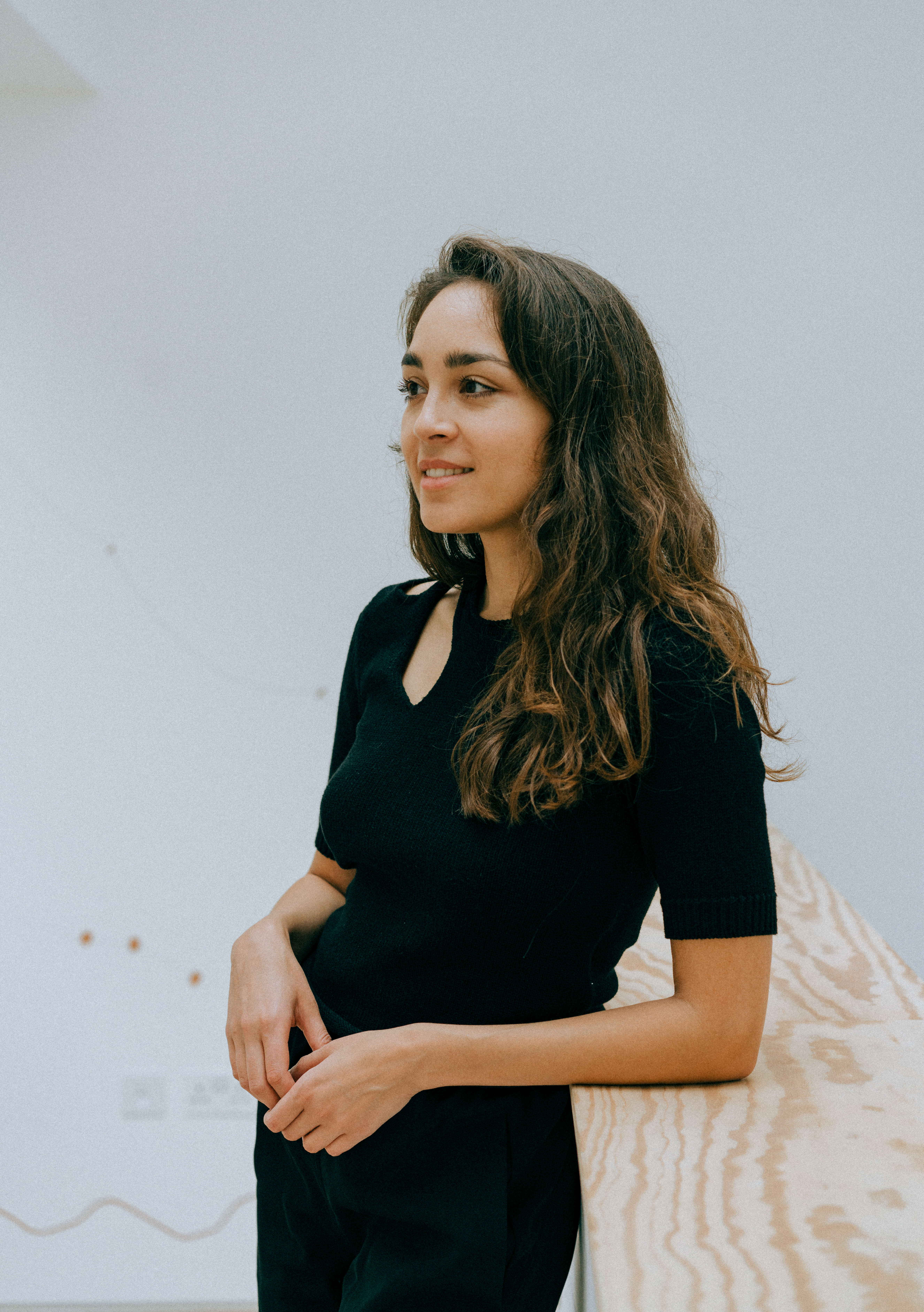
Daria Khan. Photo by Nasiba Gashimova
Could you tell us about your childhood? What were your early experiences and creative influences like?
I grew up in Moscow in a mixed family – Russian and Korean. My childhood coincided with the fall of the Soviet Union. Those were turbulent times, and felt very unsafe. I didn’t have any exposure to art, especially contemporary art, until I was 18-19 years old when I started travelling. Until then, my main exposure to art was either through art catalogues or some classical museum exhibitions.
I have been doing art myself though since an early age, and I wanted to study Fine Arts. Eventually, however, I chose Art History for my BA. I got my first internship in Paris when I was 19 years old. That’s when I moved and my journey into the art world began. At the time, I also wrote my BA thesis on Mark Rothko. The gallery I worked for was Modern Art, so it had works from the late 19th century and first half of the 20th century. It had some very big names, and was a great introduction to what’s good and bad in the art world.
It was a very special experience because I got to see a lot of originals and also fakes. I saw the restoration of artworks. I went to numerous art fairs because the gallery was participating in most of them. That’s how I ended up going to Art Basel for the first time. From that time, I started being interested in contemporary art. That was also the time when my disappointment with the commercial art world grew, and I decided to study curating. I did my MA in curating contemporary art, and that’s when my critical conceptual background was formed. After graduating from the Royal College of Art, I couldn’t stay in the UK because I no longer had a visa. I started doing short-term residences and freelance curatorial projects. I worked on the educational programme of the Fifth Moscow Biennial. I had instrumental experiences through all those jobs.
When I finally could get back to London in 2016, I got this chance to use this space where Mimosa House eventually started – as a small, DIY kind of art space. The first couple of shows were self-funded, independent, and made with friends. By then, I already knew that I wanted to curate shows, and work under a feminist intersectional umbrella, from a decolonial perspective. I wanted to bring artists who hadn’t been shown in London before and explore their most ambitious ideas, their dreams, and what they wanted to realise. This was a non-profit space and we eventually got support from the Arts Council. We got this chance to experiment and be as radical as we wanted to be, without thinking about sales.
In a story in UK’s Evening Standard, it says, “Over four years of studying art history in Moscow, curator Daria Khan thinks she only heard mention of one female artist: the Baroque painter – Artemisia Gentileschi…As for female art historians? Forget it. ‘It was a male discipline, taught by male faculty, paradoxically studied mostly by female students.’”
Was this the time that the idea of promoting female and queer artists subconsciously emerged?
To be completely honest, I was just overjoyed initially to join a school to study art history. I have come from a system which was still post-Soviet, and therefore, very patriarchal and conservative. So just having that choice – which was also going quite against my family – was a big step forward for me.
I think a lot of things felt wrong for me when I was working in an art gallery in France during my early 20s. As a young, mixed heritage woman, working in this big, commercial sort of context, a lot of things started to feel wrong such as sexism and exoticization. On the other hand, I felt privileged that I got to leave Russia – at the time, leaving Russia was my main priority because I didn’t feel that I belonged there. It was a very big shift for me to move to Europe which is more liberal and diverse.
When I got into the arts college to do my MA in London, I found conceptual ways of thinking through feminism and race, and a support network of fellow students and some tutors. There was a language for us to share conversations around those issues openly. That’s when I felt that the issues I have experienced could actually find a voice and support system. And it was then that the decision to work with female and queer artists first emerged.
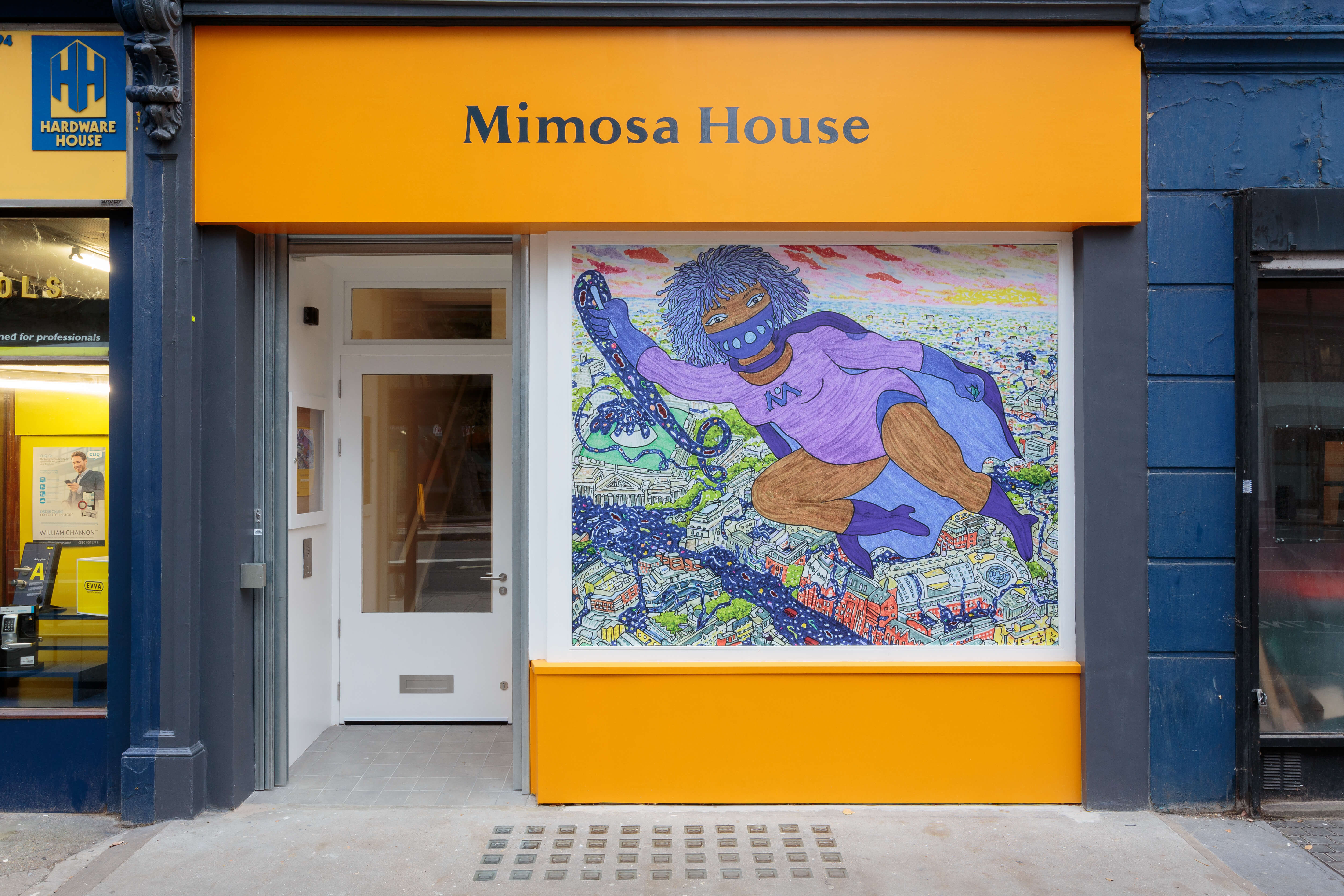
TextaQueen, The Universal Experience (close up of shopfront section), 2020. Photo: Tim Bowditch
By then, I already knew that I wanted to curate shows, and work under a feminist intersectional umbrella, from a decolonial perspective. I wanted to bring artists who hadn’t been shown in London before and explore their most ambitious ideas, their dreams, and what they wanted to realise.
Could you tell us why you decided to make Mimosa House a non-profit space?
I never wanted to set up a commercial gallery. I was always more inclined in curatorial academics and in production and discourse of knowledge. And I hoped that the non-profit format would give me more of that opportunity.
I am curious to know about the residency (in Stromboli) that led to the first show of Mimosa House. You did some really interesting stuff in that residency like volcanic swimming and other creative experiments. What was your experience like?
It was quite an eye-opening experience. This volcanic island was magical. The connection between the participants was special, as we were all from different fields of knowledge and practice but with shared interests. We had a lot of conversations about feminism, like what it meant to be a female identifying practitioner working in arts.
The whole experience of going up to the volcano at night was incredible. After coming back from there, we participated in a drumming session which had a very strong psychedelic effect. The specific island I had gone to has a tradition of practicing witchcraft, and they use local plants for their psychedelic effect. Some of us were apprehensive about experimenting with these psychedelic substances, however, the drumming session had the same effect on us. It was quite a liberating and powerful experience.
Then we decided to share the experiences from our residency as the first show at Mimosa House. It happened very organically. Nothing was institutionalised; it was about like-minded people with similar interests coming together and ideating. After the first show, I registered Mimosa House as a non-profit company, so that it made raising funds easier for us.
I had already chosen the name Mimosa House, and it was only later that I discovered that Mimosa root has psychedelic powers. That was quite interesting.
How was the exhibition received?
People were excited about the agenda I had proposed from the beginning. I was quite open in my communication about the umbrella under which I was imagining Mimosa House to work. I think people were enthusiastic because there was no institution in London doing shows like that in a systematic way.
It was still a DIY project at that time, but I had a lot of support from my network. So I feel it was a very good first project to initiate Mimosa House with.
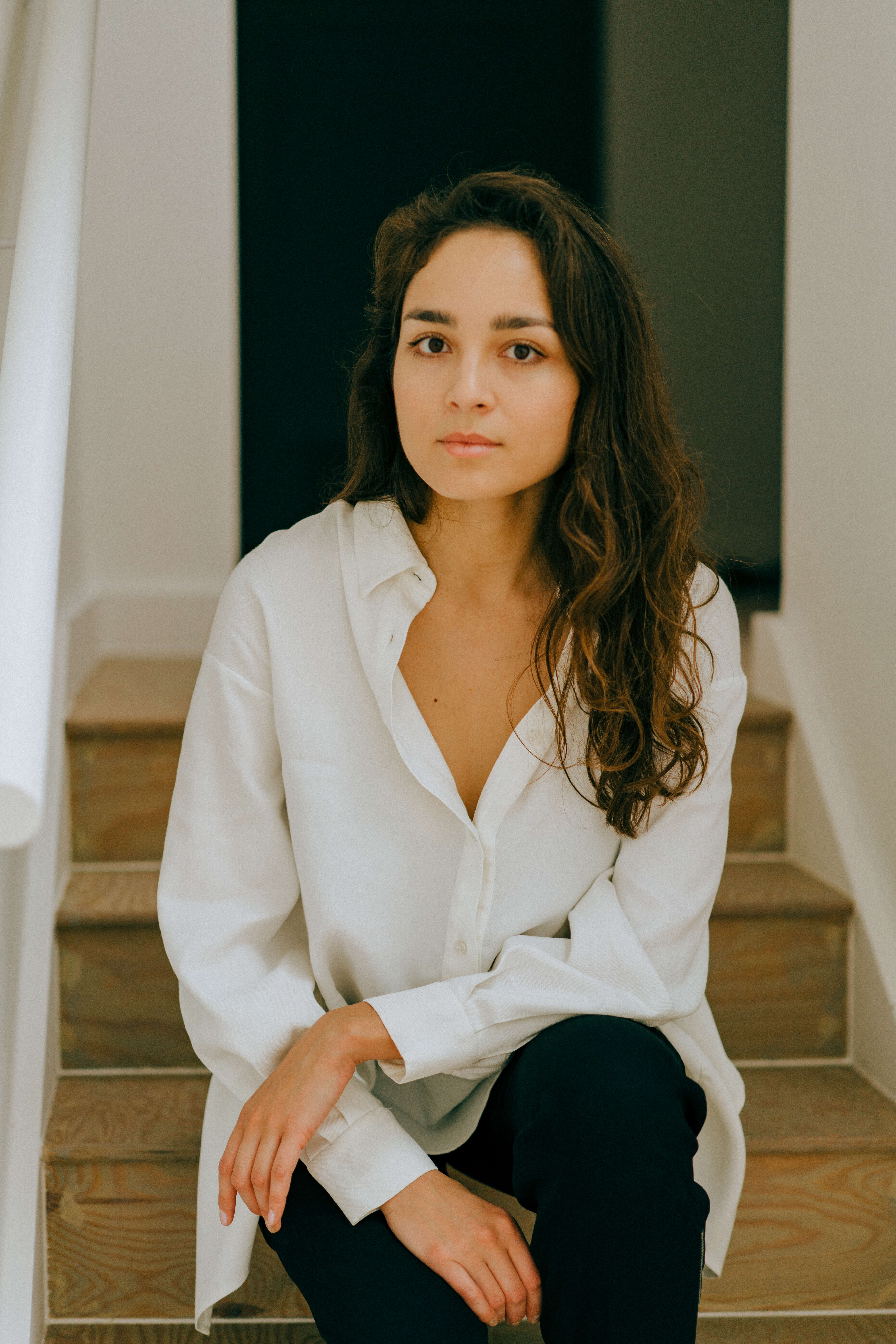
Photo by Nasiba Gashimova
I think since Mimosa House was founded it has become a point of reference for artists, especially younger artists and practitioners. And with that, our responsibility has increased.
How have you balanced the DIY and the spirit of collaboration and experimentation in all the exhibitions you have done so far?
I think Mimosa House has become more institutionalised, and it’s an inevitable process as we grow. To expand the business, we need more funds, and a lot of responsibility comes with it. Also, our visibility has increased a lot since we shifted to the office on a main street. The challenge now will be to preserve the experimental, radical, independent spirit in terms of the choices we make and yet work as an institution.
What are some of the non-negotiables for you, apart from obviously the main premise of showing female and queer artists?
I think the curatorial part will always remain independent from funding or from the advisory board. That’s very important for me.
Has it ever been complicated?
Interestingly no, because it was established from the beginning that this project is of curatorial nature for me, and not that much of an institutional one.
I want to talk about your new gallery space in Holborn. You got a fantastic mural done by artist TextaQueen.
The TextaQueen’s artwork is actually not a mural. It’s a print which covers six windows alongside the vitrine of our building. It’s a site-specific and location specific artwork that we digitised and printed on vinyl. It was done during the first lockdown.
It has an image of superheroes floating above the city of London. You can spot the British Museum, which is close by. TextaQueen features these superheroes who have magical wands that do the purging of the ancestral powers and artefacts from the British Museum. There’s this magical flow in the city of London. It is a sensational and an empowering image. We hope to do more facade commissions of this sort.
How challenging was the lockdown for you personally and professionally?
It made me question a lot of things – especially the workload and the sense of living in London. Half way through the lockdown, I started my PhD which added to the workload and Zoom time. I was not able to meet my team and artists, which was really tough. Our programmes were getting postponed constantly with no clarity of when we could reschedule them. Overall, the uncertainty of future plans was the most difficult part.
But on the positive front, in addition to the TextaQueen facade project, we started a new project called ‘Mimosa Art Kit’ during the lockdown. People could sign up for the program and receive a kit with activities every couple of weeks. This was free of cost, and was open for people of colour to participate. We wanted to reach people who didn’t really follow art or visited art galleries. It was quite exciting because almost 70% of the parcels were sent outside London, and this was the first time that we managed to connect with audiences outside of London.
Each art kit series is developed by different artists. The first kit was developed by Davinia-Ann Robinson. t was all about our relationships with nature such as the soil, plants in our house, and nearby parks and wilderness areas. The last kit was developed by a group of artists called Black Fly Zine, and it’s about sexual health.
We have a WhatsApp group where people can share their experiences, things they do, poetry they write, etc. They have regular zoom calls with the artists. It feels great to be engaging with people outside of London who otherwise may not have been able to come to our space. We have applied for a series of funds for it, and hopefully one day, we will be able to send these kits not just in the UK but even internationally.
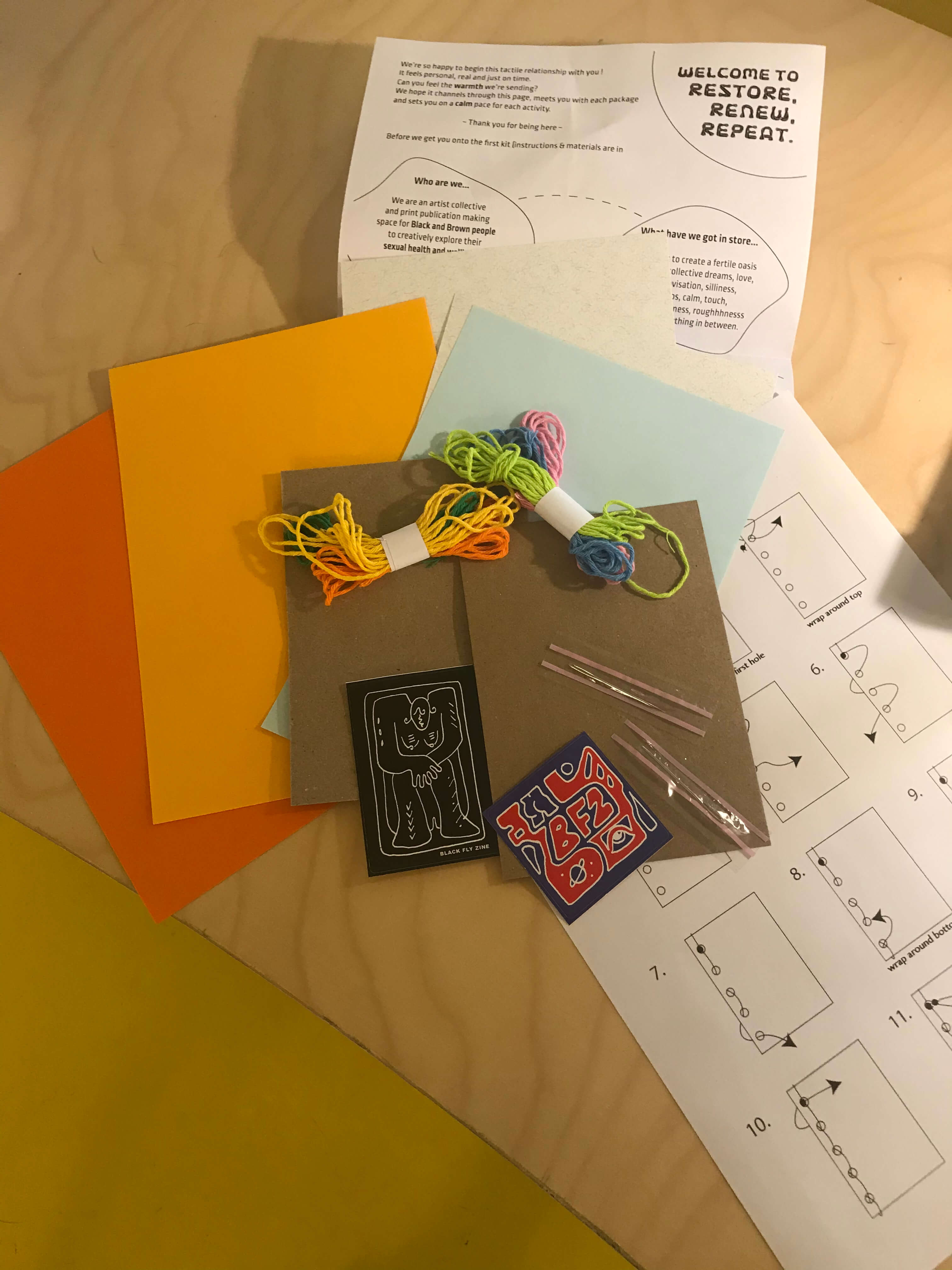
Artkit mailout by Davinia-Ann Robinson
How do you see your role as a curator change post-pandemic?
My thinking about curation has been ongoing since my MA days and it continues as I am doing my PhD. It’s a constant exploration – what is my role as a curator; how can I facilitate an artist better; what else can I do; and what’s my role in writing and mediating?
But all these thoughts had been going on even before the pandemic. Post pandemic, the question was how to create a long-lasting impact on the public. In fact, the Georgia Sagri’s IASI (“recovery” in Greek) which opened just a few days before the pandemic started, was an experiment on making a long lasting impact on people through a series of regular one-to-one treatments. The art kit was also one such action in that direction.
We want to offer a tailored approach to the community based on their feedback. For instance, we had an open day for local communities at the new space, where we bounced off a few events related ideas to them. We wanted to get their feedback first before launching them.
Curation is also about forming close relationships with the artists, having a constant dialogue with them. How do you build these relationships?
I think a good example for this is Tomaso Binga, an Italian artist. We had a solo show with her a few years ago. That’s where we started to form a relationship, and in fact, that’s what led me to do my PhD.
Mimosa House is not a commercial gallery, so we don’t offer artists long-term collaboration. Instead, we try to give visibility to as many artists as possible, so we don’t end up working with artists on an ongoing basis. Our approach comes from understanding the artist’s needs and requirements; what stage of the career the artist is in; and how we can help them in realising their ideas. It could be supporting them through a commission or facilitating an application or planning a new series or events around their practice. But it always stems from having a dialogue with them, rather than assuming things.
How do you incorporate an artist’s feedback? Has it ever happened that there has been a difference of opinion between you and the artist on how a certain work needs to be presented?
I have always maintained that the work has to be presented as per the artist’s vision. But things become a little challenging in group shows, because obviously if you have six different artists participating in the same exhibition, it’s tough. At such times, it’s important for me to share information with them and to keep things as open and transparent as possible. I never impose my ideas on the artists. The work will never be shown in a way that the artist is not comfortable with.
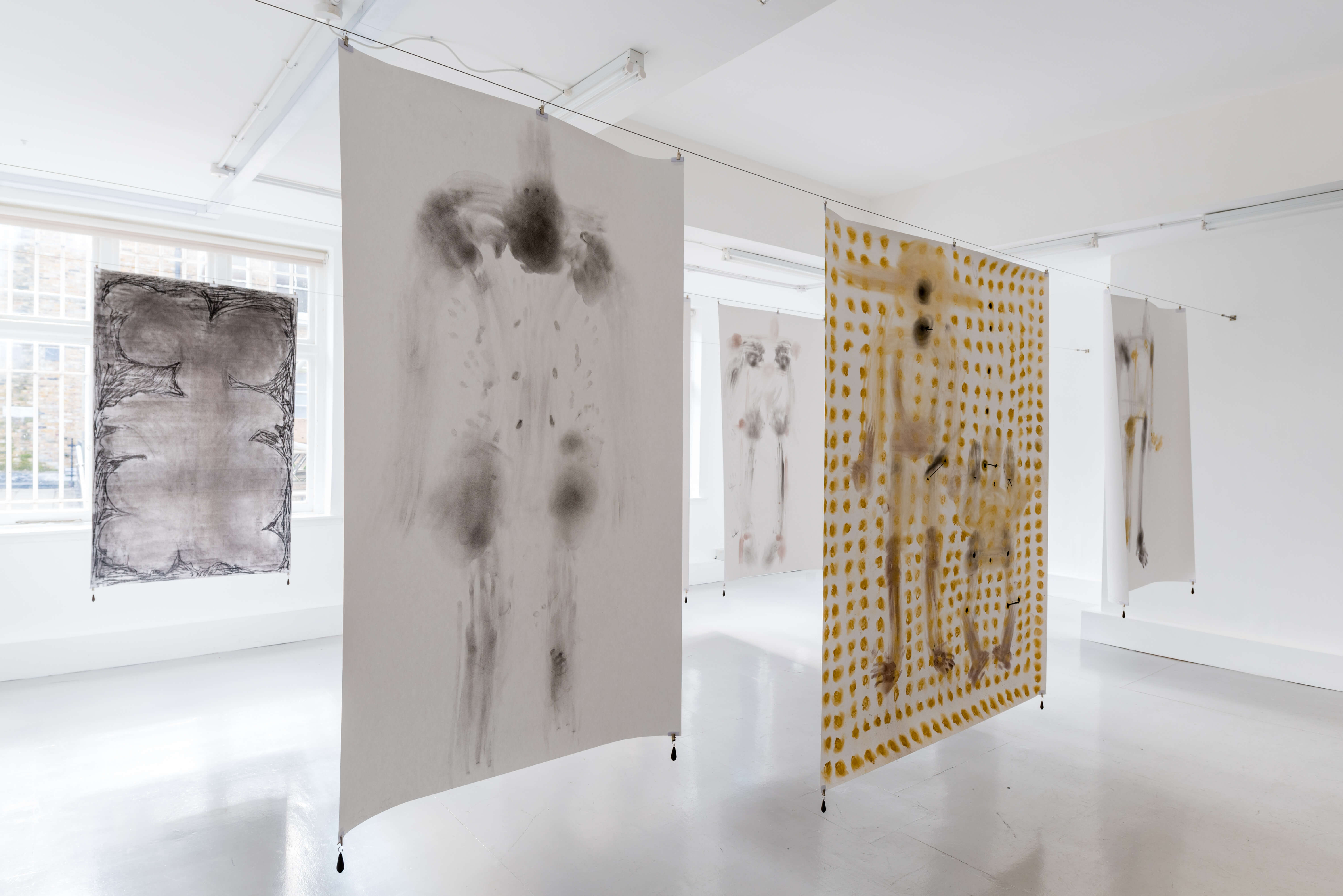
‘IASI’, 2020, installation view, Mimosa House, London. Photo by Lucy Parakhina. © Georgia Sagri
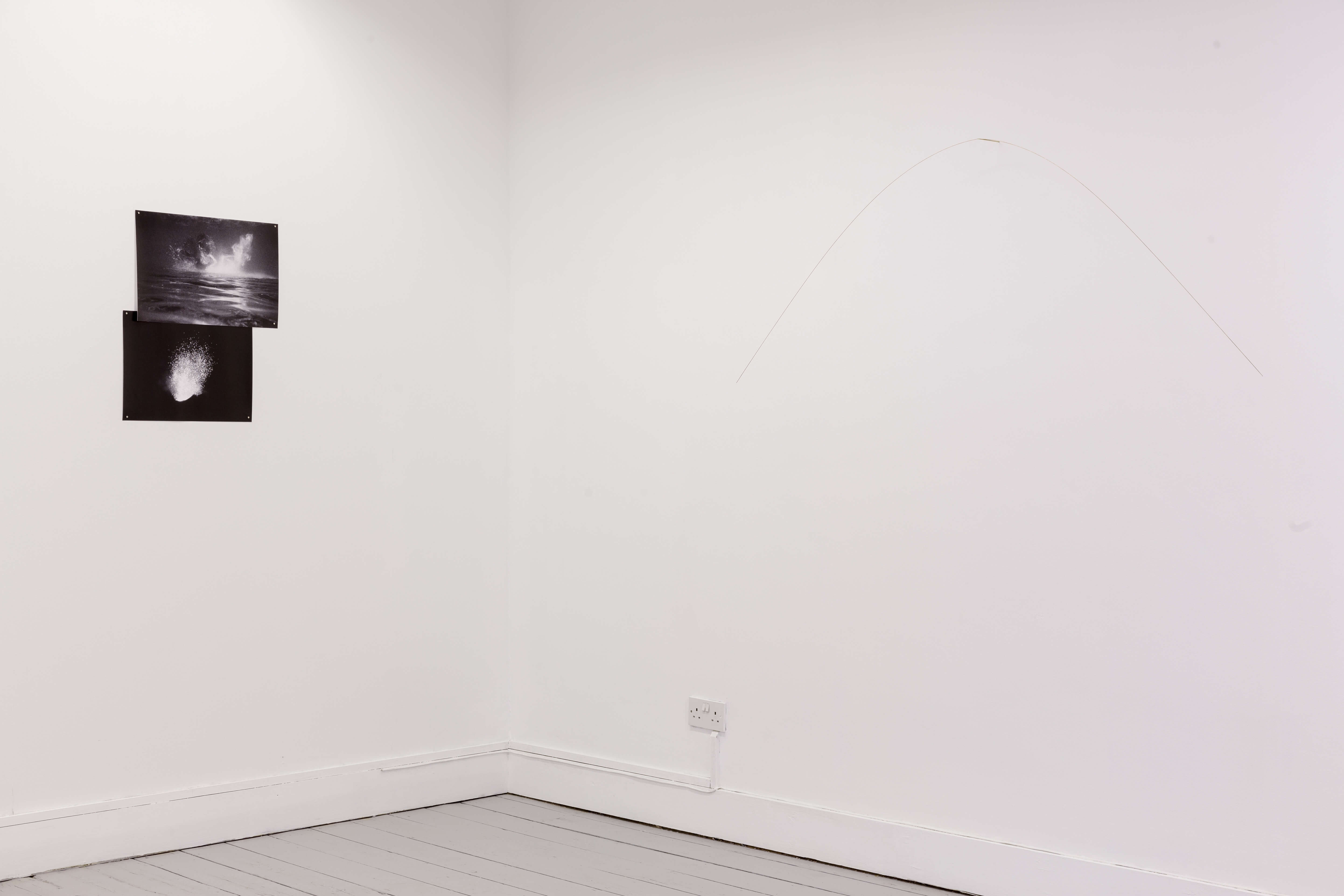
Growing Gills, Installation view. Photo: Tim Bowditch.
I think the curatorial part will always remain independent from funding or from the advisory board. That’s very important for me.
Could you tell us more about your upcoming (update – now ongoing) show ‘Cosmic Mothers’?
My friend and a member of the advisory board, Taus Makhacheva, told me about a painting called ‘Cosmic Mother’. Taus is partly based in Makhachkala in Dagestan’s Republic in Russia situated on the Caspian Sea. She has been telling me about an artist named Galina Konopatskaya who had created this incredible artwork called ‘Cosmic Mother’ in the early 70s.
It is an androgynous figure holding a baby, both dressed in cosmonaut suits, floating in an open space with the earth in the background. The painting became the starting point for me. It is quite an enigmatic piece of work for me – in terms of the fact that I know the painting exists but I have never really seen it in person. It’s also unusual and outstanding, especially when you see it in the context of other works that the artists created because she belonged to a very conformist, social realist tradition of painting. I wanted to suggest another perspective to look at this image. Because if you think about it from the context of the Soviet Union – colonising space and women’s emancipation – it was an ideologically heavy painting, as it suggests that women can do everything. And we all know how misleading this communist propaganda was, and how it managed to promote the idea of feminism, which was groundbreaking on the outside and yet, it was not in reality.
So I suggested revisiting the image from the perspective of queer, sci-fi, and cyber feminism. It’s about how we choose to contextualise artworks, especially historical artworks, and how we chose to navigate these very oppressive structures of power and ideologies. In a way, this became my starting point. Then I started sharing this idea with different artists because I wanted to explore different cosmologies across geographies. I approached artists from different countries and cultures. I am bringing a phenomenal artist, Janina Kraupe-Świderska, from Poland to the UK for the first time, whose works I got to know thanks to another Polish artist, Paulina Olowska. In the context of the Soviet occupation of Poland and conservative academic tendencies, it’s interesting to see how Janina Kraupe-Świderska navigated all that and created this authentic and autonomous body of work. She was an artist as well as an astrologist.
We have some emerging and contemporary artists too, who share systems of knowledge and ideologies – in terms how we resist those, how we build own own narratives, our own radical systems of knowledge, and what role does imagination play there. I guess it’s a very vast and overarching subject, but with this very strong kind of point of departure being the ‘Cosmic Mother’ image.

Janina Kraupe-Świderska, Pięć Modlitw (Five Prayers), oil on canvas,1984

Janina Kraupe-Świderska, Strefa Słońca (Sun Zone), oil on canvas, 2001
What’s your relationship with London? What do you like and dislike about the art scene there?
I always feel like wherever I am, it’s temporary. I have changed a few countries and I am a very nomadic person in general. I couldn’t travel for a long time because of the place I was from. My parents couldn’t travel for many years, and my grandparents never travelled. So I had this craving to go everywhere. I still find it difficult to accept the fact that I am now settled in London. I can say that I am temporarily based in London, because both Mimosa House and my PhD are here. But I am not from here, just like many other people I work with.
London has a lot to offer from an art perspective. It has so many institutions, galleries, and museums. There are various possibilities of collaborations, partnerships, and state support – especially compared to some other countries where I have worked before. I am glad Mimosa House is based here but I can’t say that I chose this strategically or consciously. It’s a coincidence.
Are there any negatives of having an art space in London?
It’s hard for me to compare as I never had a space anywhere else. I just feel that London is more welcoming from an art space point of view, because there are more structures of support. But it’s obviously also quite problematic with Brexit, new policies of immigration, colonial histories, issues of race and class – all these have not been addressed as they should have been. But it’s still a very stimulating environment to be working in.
What’s been your most challenging exhibition to put together at Mimosa House?
In 2019, I worked with the British artist Zoe Williams on her solo exhibition. We’ve had a previous creative relationship as well. When I approached her initially for Mimosa House, she told me she had a dream project of making an erotic film. The challenge was to fundraise for this. We applied for a lot of grants, but all of them got declined because for some reason, erotic subjects were not in tune with their organisation. We even tried a crowdfunding campaign!
Anyway, we eventually managed to raise funds for the project. It was our first commission project for Mimosa House. The fundraising part, in general, is the most challenging aspect of the business.
Do you think about the impact of your work?
I think since MH was founded, it has become a point of reference for artists, especially younger artists and practitioners. And with that, our responsibility has increased.
We will be five years old in 2022. We have started working on a highly ambitious, very big project, which seems quite unreal. The exhibition is called ‘transfeminisms’. It will coincide with our five-year anniversary, and will open towards the end of 2022 – early 2023.
It will be a rotating exhibition where the display will constantly change. It will happen over a span of nine months, and then move to other interventional locations. It feels good to be able to do something of this kind which accumulates all the knowledge and synthesises experiences and collaborations we have had over the past five years, and also reflect on what feminisms are today. What is our role in all of this?
I am co-curating this with a group of amazing curators including Maura Reilly, Jennifer McCabe, and Christine Eyene. I am really looking forward to it. It will be a legacy project for MH and hopefully, we will be co-producing a major publication for the first time as well.
Daria's profile image (edited to fit the format) on top is by Nasiba Gashimova. ©
